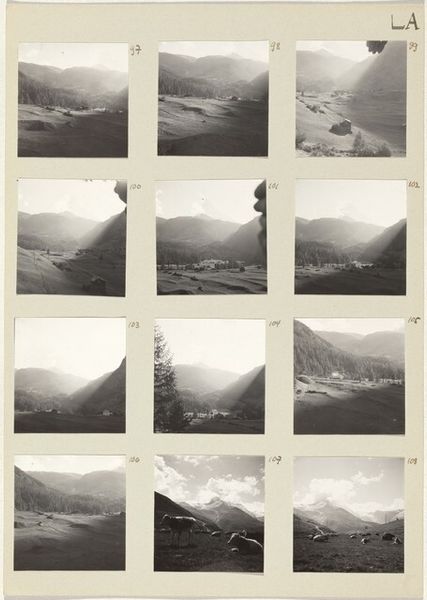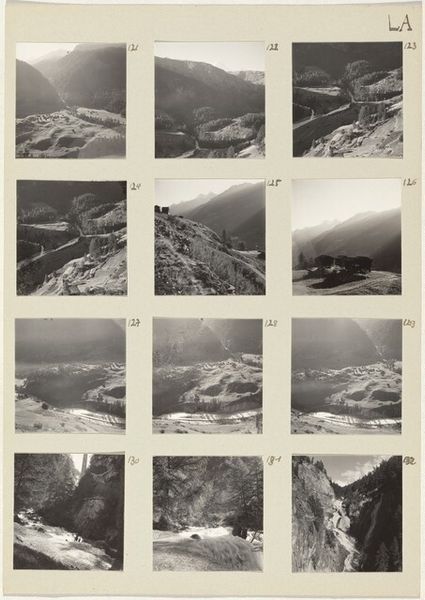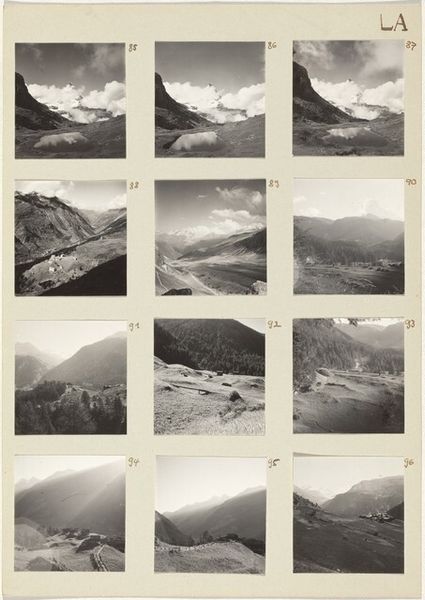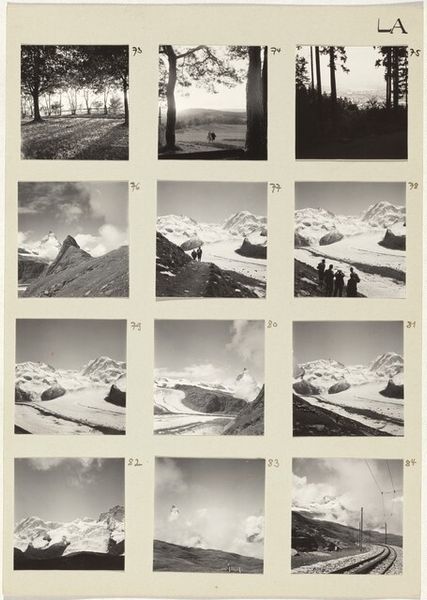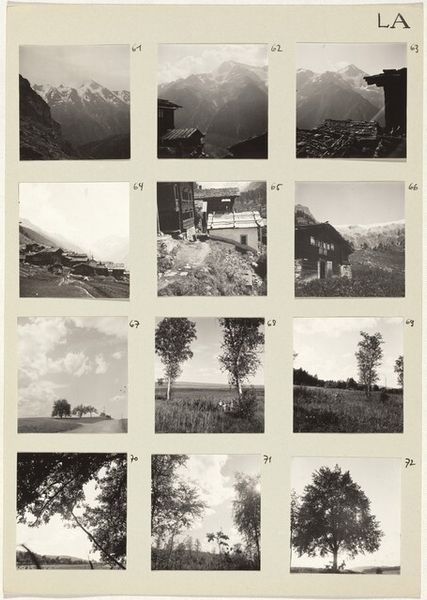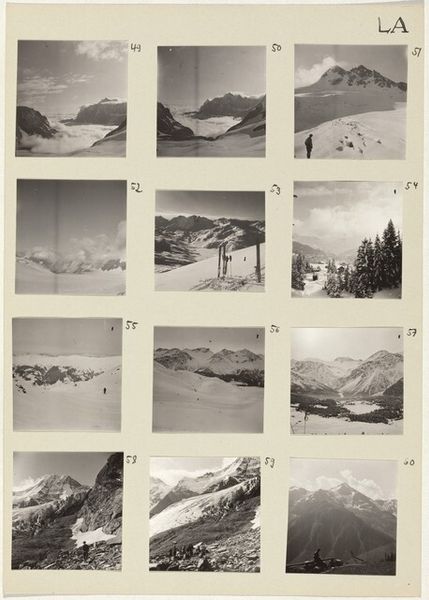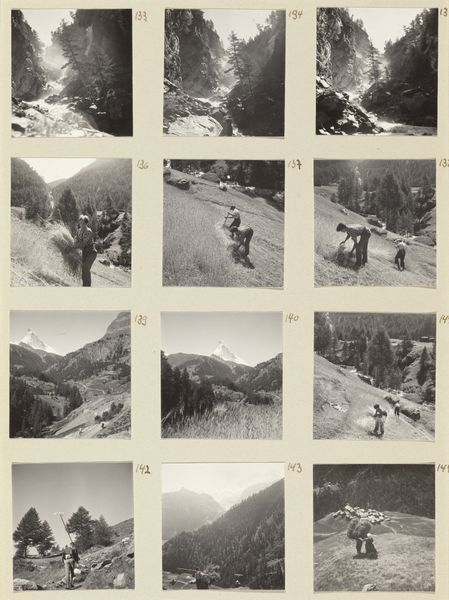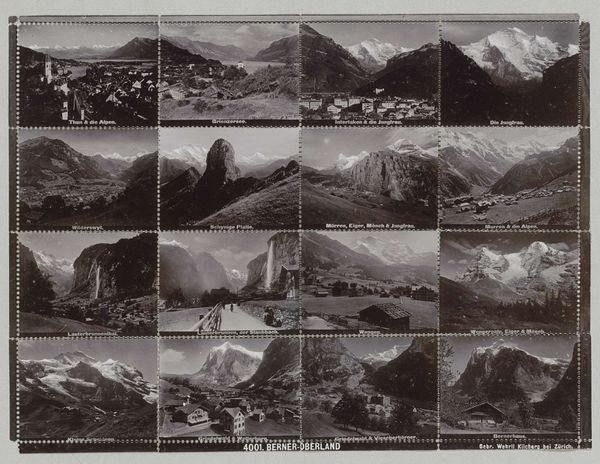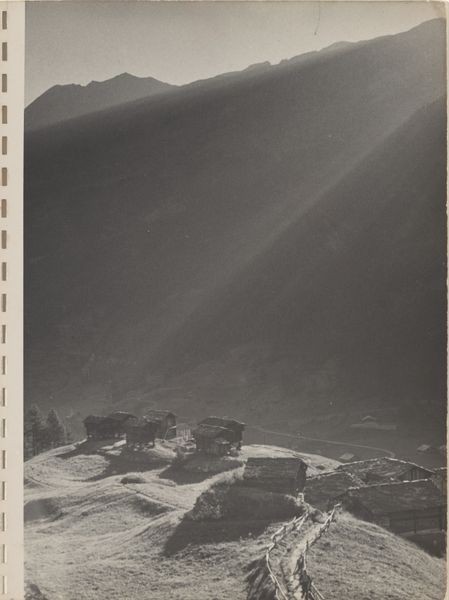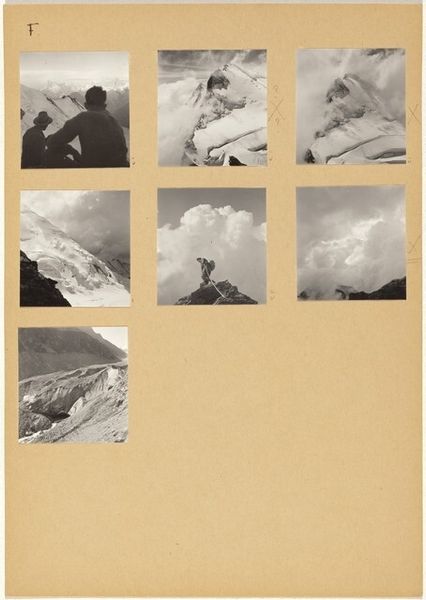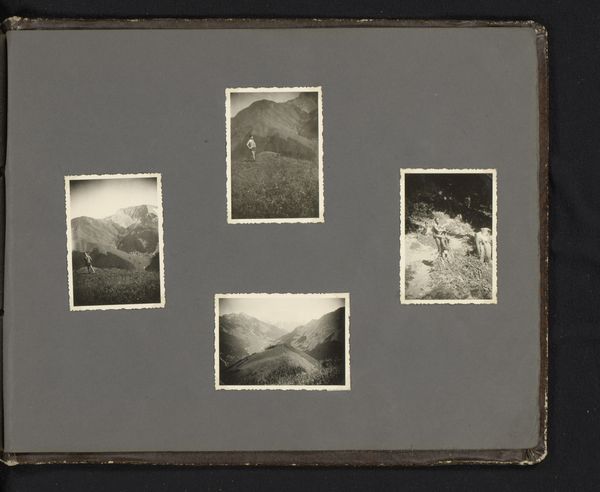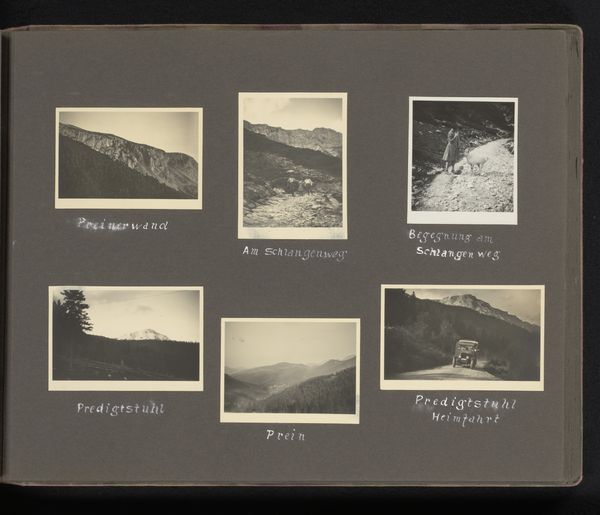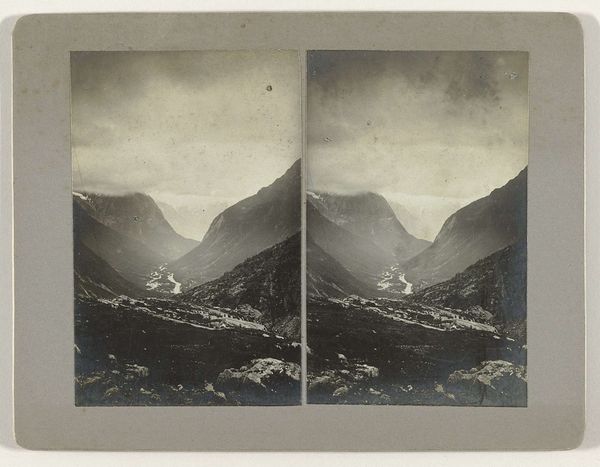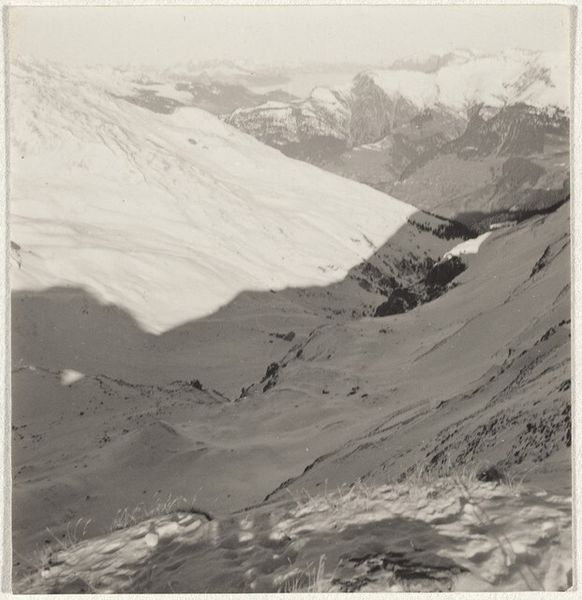
photography, gelatin-silver-print
#
desaturated
#
desaturated colours
#
landscape
#
photography
#
gelatin-silver-print
#
realism
Dimensions: sheet: 29.6 x 21 cm (11 5/8 x 8 1/4 in.)
Copyright: National Gallery of Art: CC0 1.0
Editor: So, we're looking at Robert Frank’s gelatin silver print, "Die Landschaft (Landscape) 109-120," created between 1942 and 1946. I’m struck by the multiple perspectives and how they create almost a panoramic sense of place, but in fragments. How do you interpret this arrangement of images? Curator: That’s a great starting point. Considering Frank's biography, the landscapes take on a social and political resonance. Think about Europe during those years. The fragmentation you observe isn't just a stylistic choice, it mirrors the fragmented state of a continent in turmoil. How might these landscape photographs serve as a commentary on place, belonging, and displacement during and after the war? Editor: That context makes a big difference! It feels like the landscape itself is unstable. Are these landscapes a reflection of people’s internal states as well? Curator: Exactly! And the fact that it's a gelatin silver print – a relatively accessible medium – suggests a democratization of image-making. These images weren’t necessarily meant for an elite gallery setting initially but rather for broader circulation, documenting the changing face of Europe. Do you think this would have affected how they were received? Editor: Definitely. If they're documenting and showing change to a wider audience, it personalizes it. It makes history something everyone experiences and understands on a smaller level, not just what’s in textbooks. I’m starting to see how this single piece speaks to bigger narratives. Curator: Precisely. It highlights the artist's intention of using familiar themes as a powerful way to reflect larger socio-political upheavals. Thinking about landscape art in this period is a key way to discuss not just changes to representation but social purpose of creating visual media during times of upheaval. Editor: That gives me a lot to consider about not only this photograph, but art’s larger purpose and circulation! Thanks so much for this context! Curator: My pleasure!
Comments
No comments
Be the first to comment and join the conversation on the ultimate creative platform.
